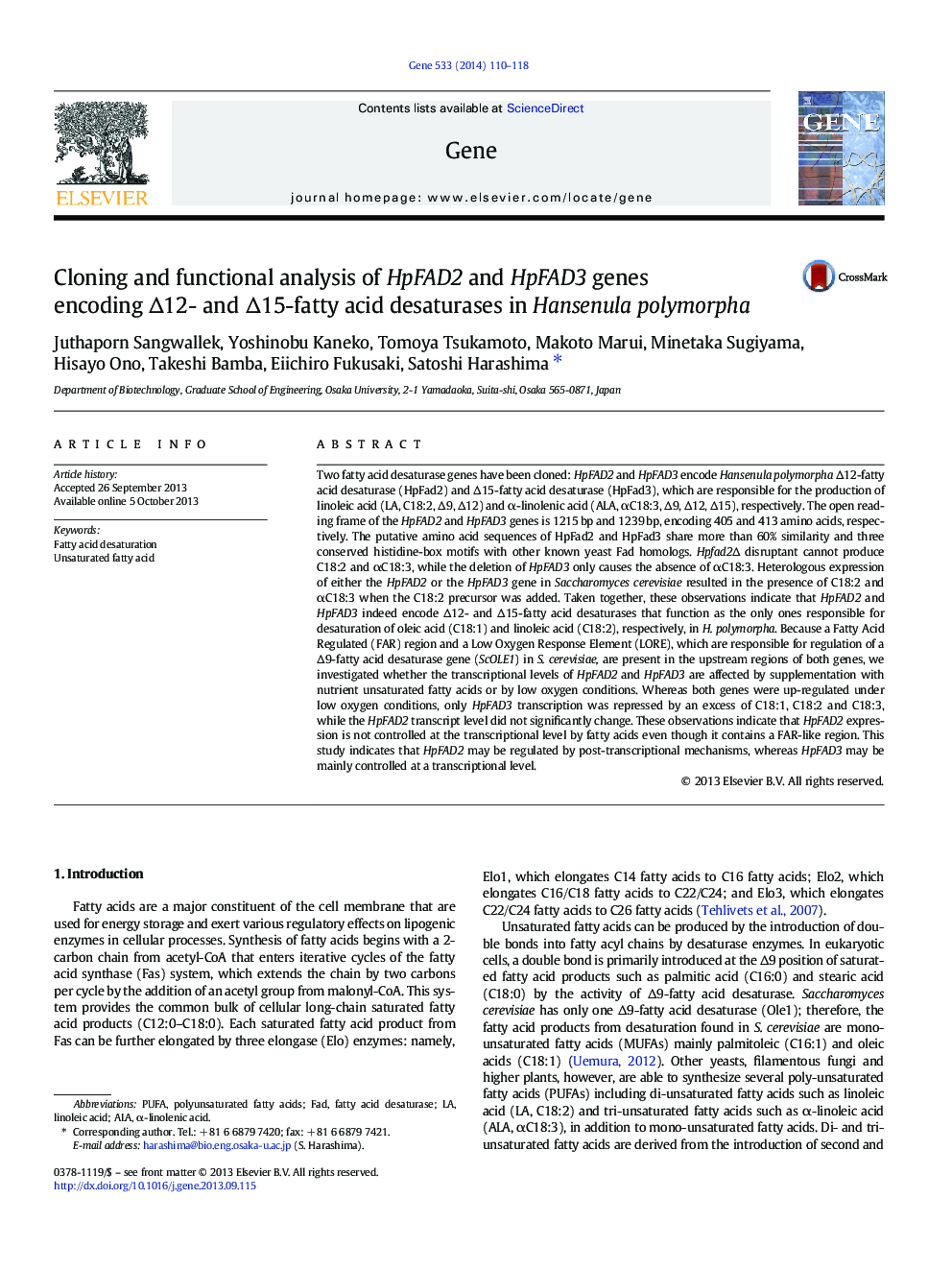| کد مقاله | کد نشریه | سال انتشار | مقاله انگلیسی | نسخه تمام متن |
|---|---|---|---|---|
| 2816714 | 1159950 | 2014 | 9 صفحه PDF | دانلود رایگان |

• Disruption of HpFAD2 results in the absence of C18:2 and αC18:3 fatty acids.
• Hpfad3∆ disruptant cannot produce αC18:3 fatty acid.
• S. cerevisiae expressing HpFAD2 can synthesize both C16:2 and C18:2 fatty acids.
• When C18:2 was supplied, S. cerevisiae expressing HpFAD3 can produce αC18:3.
Two fatty acid desaturase genes have been cloned: HpFAD2 and HpFAD3 encode Hansenula polymorpha Δ12-fatty acid desaturase (HpFad2) and Δ15-fatty acid desaturase (HpFad3), which are responsible for the production of linoleic acid (LA, C18:2, Δ9, Δ12) and α-linolenic acid (ALA, αC18:3, Δ9, Δ12, Δ15), respectively. The open reading frame of the HpFAD2 and HpFAD3 genes is 1215 bp and 1239 bp, encoding 405 and 413 amino acids, respectively. The putative amino acid sequences of HpFad2 and HpFad3 share more than 60% similarity and three conserved histidine-box motifs with other known yeast Fad homologs. Hpfad2Δ disruptant cannot produce C18:2 and αC18:3, while the deletion of HpFAD3 only causes the absence of αC18:3. Heterologous expression of either the HpFAD2 or the HpFAD3 gene in Saccharomyces cerevisiae resulted in the presence of C18:2 and αC18:3 when the C18:2 precursor was added. Taken together, these observations indicate that HpFAD2 and HpFAD3 indeed encode Δ12- and Δ15-fatty acid desaturases that function as the only ones responsible for desaturation of oleic acid (C18:1) and linoleic acid (C18:2), respectively, in H. polymorpha. Because a Fatty Acid Regulated (FAR) region and a Low Oxygen Response Element (LORE), which are responsible for regulation of a Δ9-fatty acid desaturase gene (ScOLE1) in S. cerevisiae, are present in the upstream regions of both genes, we investigated whether the transcriptional levels of HpFAD2 and HpFAD3 are affected by supplementation with nutrient unsaturated fatty acids or by low oxygen conditions. Whereas both genes were up-regulated under low oxygen conditions, only HpFAD3 transcription was repressed by an excess of C18:1, C18:2 and C18:3, while the HpFAD2 transcript level did not significantly change. These observations indicate that HpFAD2 expression is not controlled at the transcriptional level by fatty acids even though it contains a FAR-like region. This study indicates that HpFAD2 may be regulated by post-transcriptional mechanisms, whereas HpFAD3 may be mainly controlled at a transcriptional level.
Journal: Gene - Volume 533, Issue 1, 1 January 2014, Pages 110–118